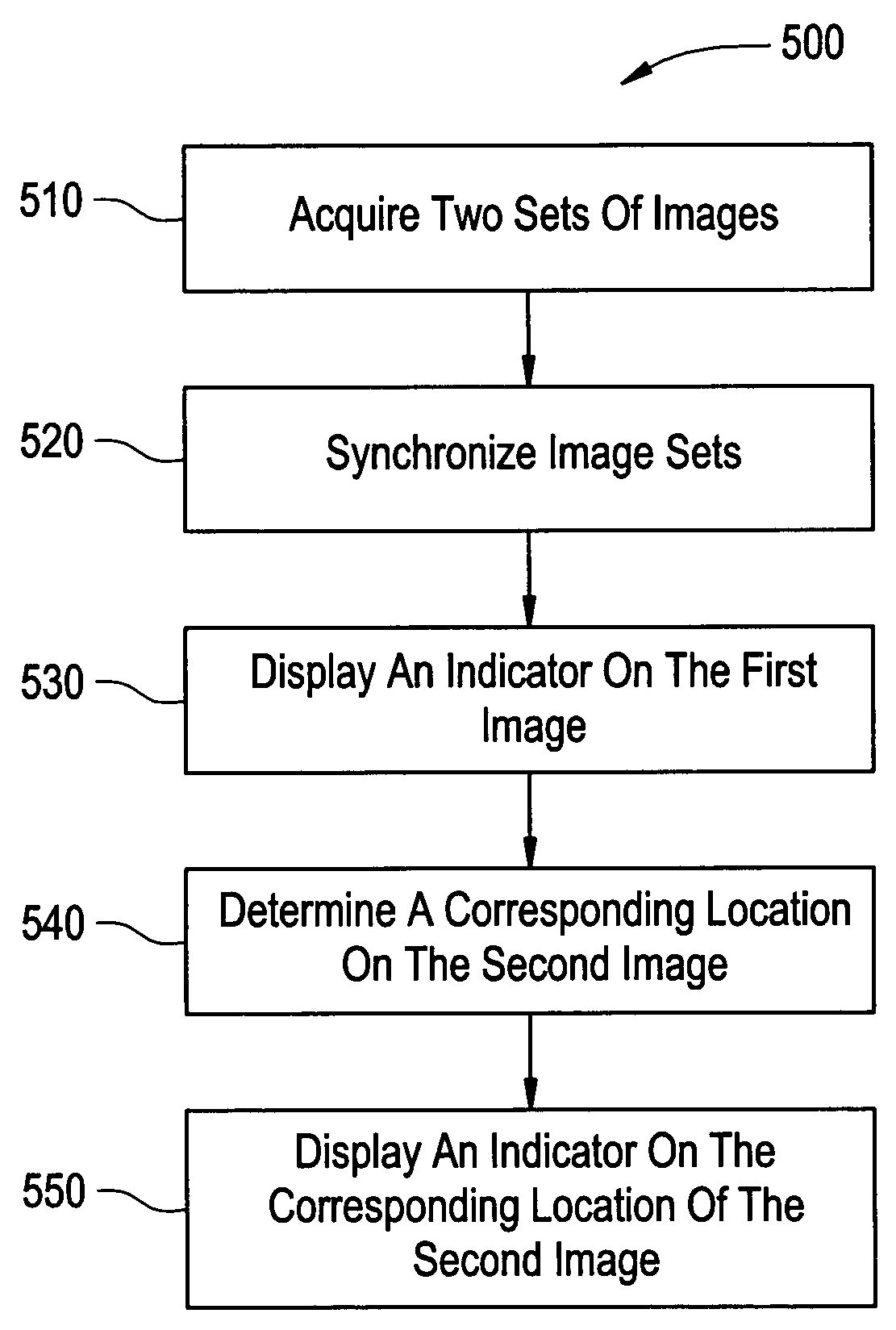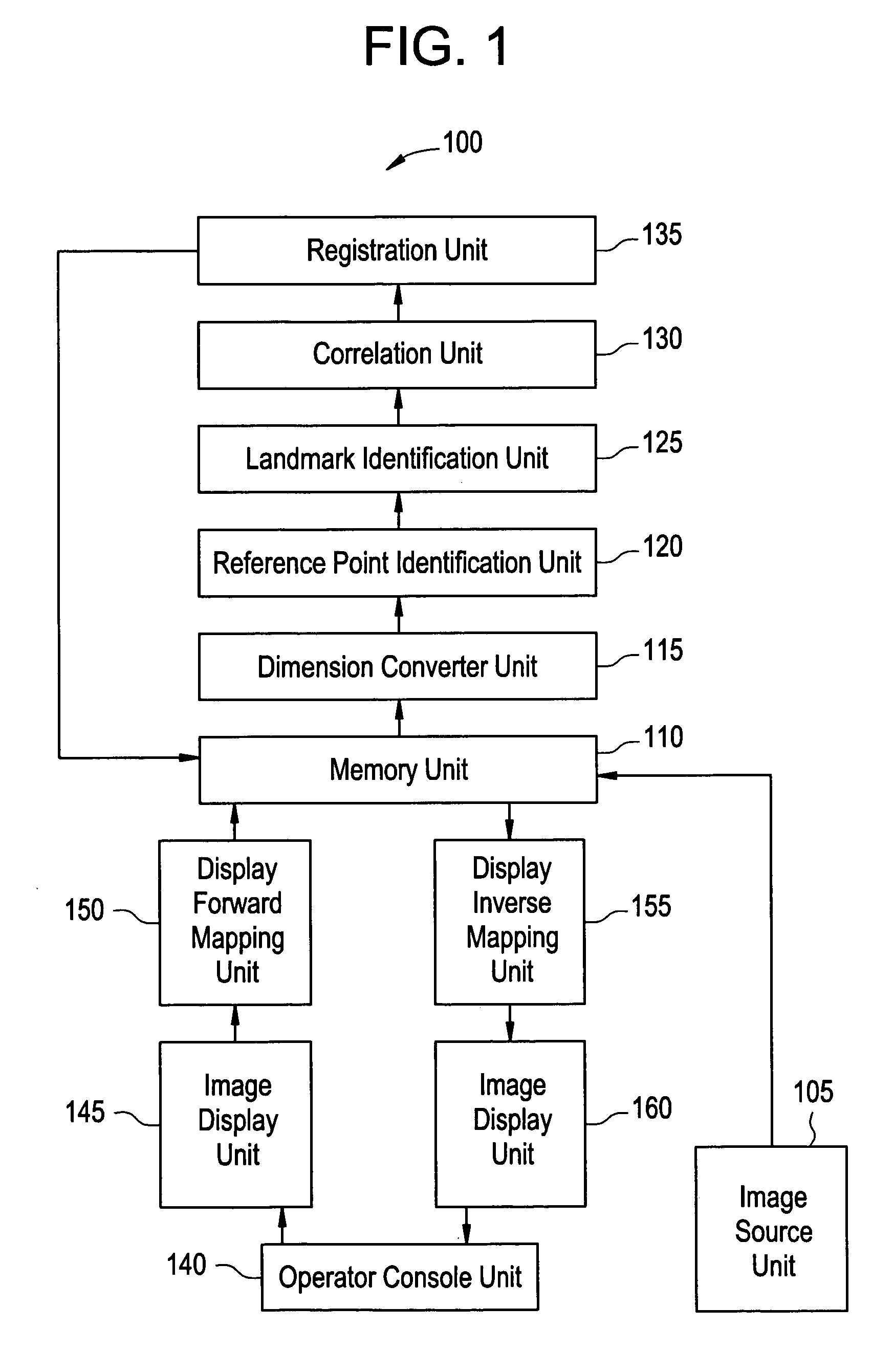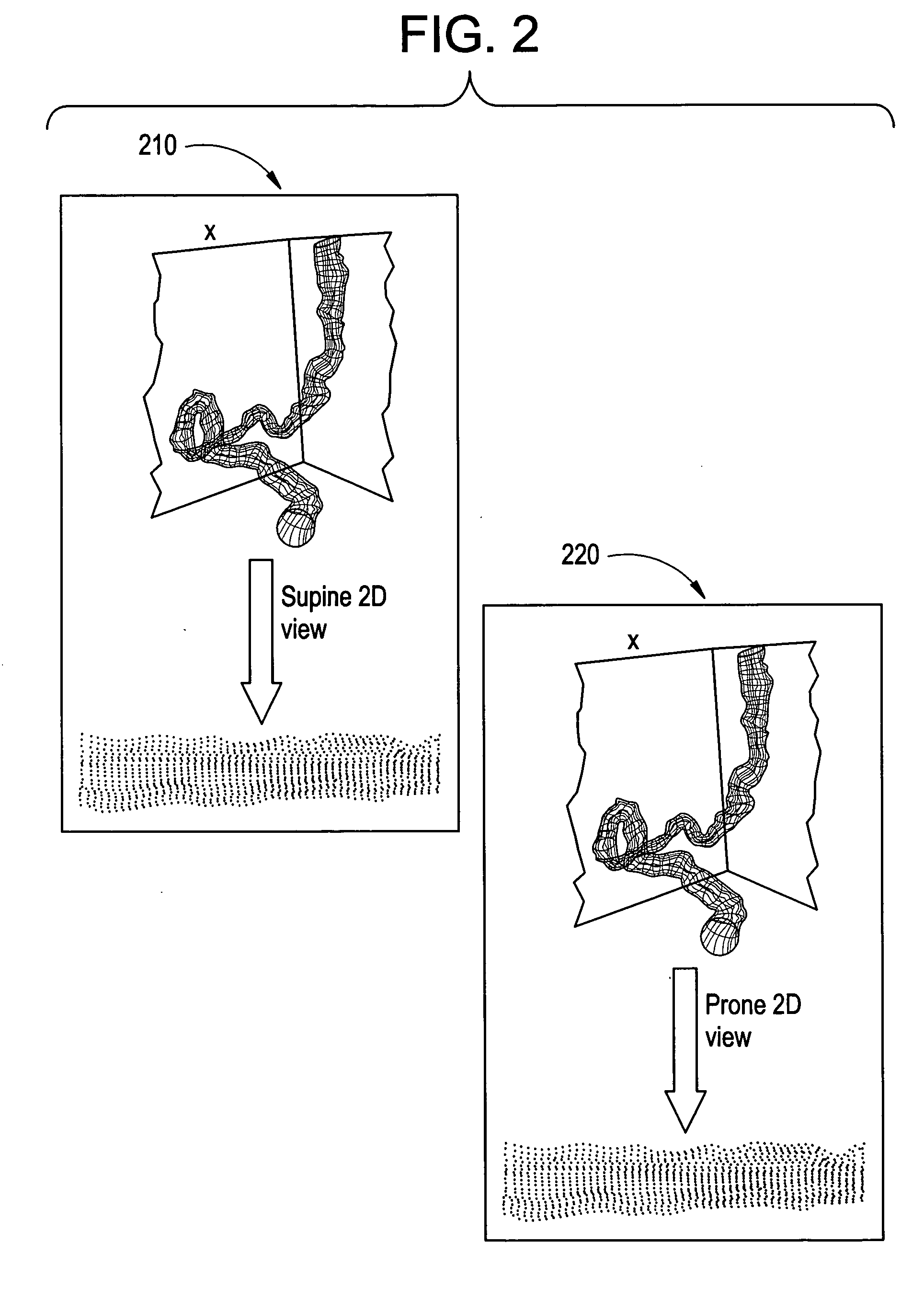Method and apparatus for synchronizing corresponding landmarks among a plurality of images
- Summary
- Abstract
- Description
- Claims
- Application Information
AI Technical Summary
Benefits of technology
Problems solved by technology
Method used
Image
Examples
Embodiment Construction
[0031]FIG. 1, illustrates an image processing system 100 used in accordance with an embodiment of the present invention. The system 100 includes an image source unit 105. The image source unit contains a first image set 103 and a second image set 107 (not shown). The system 100 also contains a memory unit 110, a dimension converter unit 115, a reference point identification unit 120, a landmark identification unit 125, a correlation unit 130, a registration unit 135, an operator console 140, an image display unit 145, a display forward mapping unit 150, a display inverse mapping unit 155, and an image display unit 160.
[0032] In an embodiment, the system 100 preprocesses image data 103, 107 and then makes the processed image data 103, 107 available for display and navigation by a user. Alternatively, the image data is available for display prior to being processed by the system 100. An image source unit 105 provides the image data 103, 107 for processing to the memory unit 110. The ...
PUM
 Login to View More
Login to View More Abstract
Description
Claims
Application Information
 Login to View More
Login to View More - R&D
- Intellectual Property
- Life Sciences
- Materials
- Tech Scout
- Unparalleled Data Quality
- Higher Quality Content
- 60% Fewer Hallucinations
Browse by: Latest US Patents, China's latest patents, Technical Efficacy Thesaurus, Application Domain, Technology Topic, Popular Technical Reports.
© 2025 PatSnap. All rights reserved.Legal|Privacy policy|Modern Slavery Act Transparency Statement|Sitemap|About US| Contact US: help@patsnap.com



